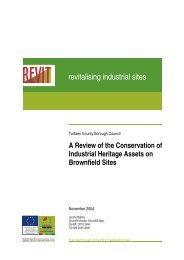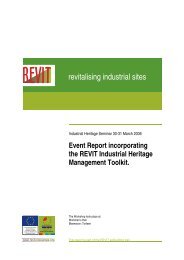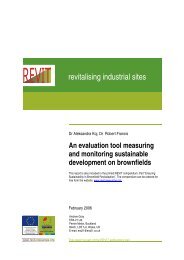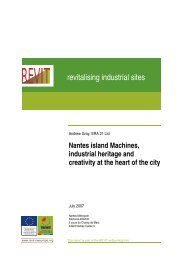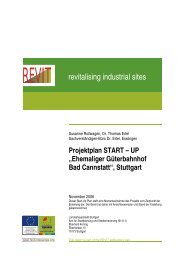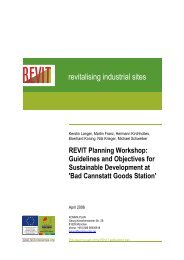STAKEHOLDER ENGAGEMENT - A TOOLKIT - REVIT
STAKEHOLDER ENGAGEMENT - A TOOLKIT - REVIT
STAKEHOLDER ENGAGEMENT - A TOOLKIT - REVIT
You also want an ePaper? Increase the reach of your titles
YUMPU automatically turns print PDFs into web optimized ePapers that Google loves.
Introduction<br />
Who are Stakeholders?<br />
In the context of public participation, a stakeholder can be defined<br />
as any person, or group, who has an interest in the project or<br />
could be potentially affected by its delivery or outputs.<br />
Stakeholders may be existing or potential customers or end-users of<br />
the product, employees, suppliers, shareholders, or those that define<br />
policies or have financial leverage. Those responsible for undertaking<br />
public participation often categorise stakeholders into ‘groups’ based<br />
on a number of factors including geographic boundaries or location,<br />
recognised bodies or institutions, income groups, land ownership or<br />
occupation, legal requirements, and real or perceived views of the<br />
issue under dispute. The nature of this classification means that these<br />
stakeholder groups are usually not homogenous entities. It is more<br />
likely in fact, that an identified “stakeholder group” will comprise a<br />
diverse mix of individuals, who may – or may not – identify themselves<br />
with the particular “stakeholder group” into which they have been<br />
categorised. This is an important issue to take into consideration when<br />
identifying who your stakeholders are. Stakeholder identification is a<br />
critical component of the initial scoping phase and should occur before<br />
the engagement plan is formulated and consultations begin.<br />
Levels of Participation<br />
Before any expensive and lengthy engagement process is begun, it is<br />
important to have a good understanding, and indeed consider what<br />
level of participation is actually being sought. Public participation can<br />
be broadly categorised into the following:<br />
LEVELS OF PUBLIC PARTICIPATION GOALS<br />
To provide the public with balanced and objective<br />
Inform information to assist them in understanding the<br />
problem, alternatives, opportunities and/or solutions.<br />
To obtain public feedback for decision-makers on<br />
Consult<br />
analysis, alternatives and/or decisions.<br />
To work directly with the public throughout the<br />
process to ensure that public concerns and aspirations<br />
Involve<br />
are consistently understood and considered in<br />
decision making processes.<br />
To partner with the public in each aspect of the<br />
Collaborate decision including the development of alternatives<br />
and the identification of the preferred solution.<br />
To place final decision-making in the hands of the<br />
Empower<br />
public.<br />
A full stakeholder engagement process as presented by this toolkit,<br />
would at a minimum, seek “involvement” from the public/stakeholder<br />
groups in which it operates, and depending on the agreed purpose of<br />
the project, may seek to transfer full ‘empowerment’ to the public in<br />
terms of final decision-making responsibilities.<br />
stakeholder engagement<br />
t o o l k i t



